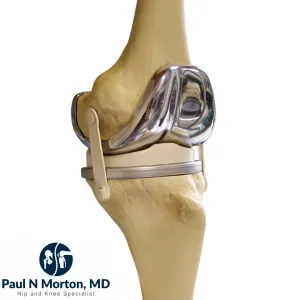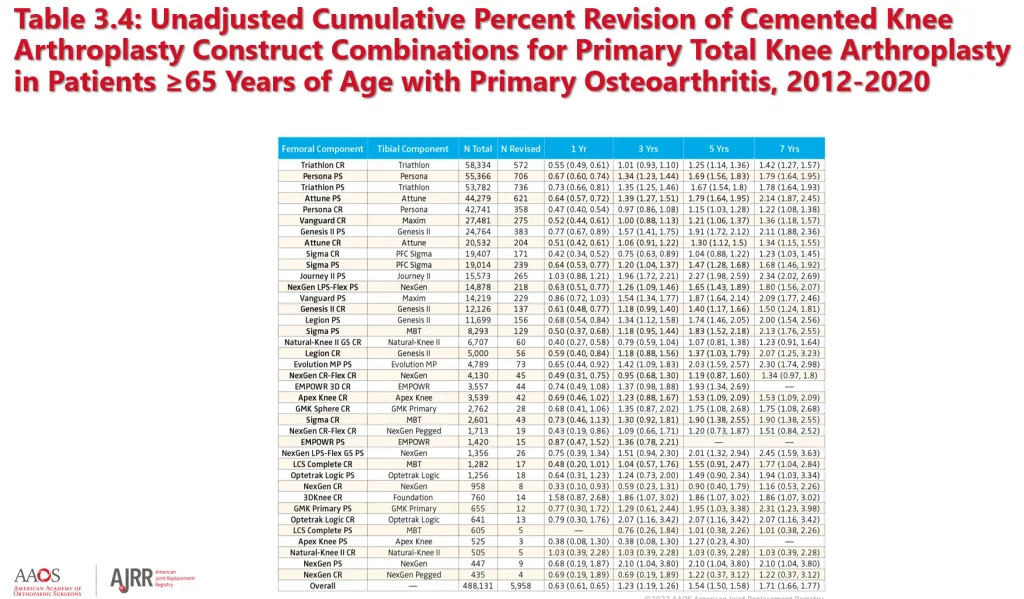
Knee replacement surgery, also known as knee arthroplasty, is a common procedure for individuals suffering from knee arthritis, injury, or other degenerative conditions. The procedure involves replacing damaged or worn-out joint surfaces with artificial prostheses. Studies have shown that 98% percent of total knee replacements still function appropriately after ten years, while more than 80 percent still function properly after 20 years. The durability of knee replacement implants is a crucial factor in determining the success of the surgery.
One of the essential factors in the durability of knee replacement implants is the material used. The most common material used in knee replacements is a type of plastic called ultra-high molecular weight polyethylene (UHMWPE). However, in recent years, a new type of UHMWPE called highly crosslinked polyethylene (HXLPE) has been developed and shown to have improved durability compared to traditional UHMWPE. HXLPE is made by crosslinking the UHMWPE molecules, increasing the plastic’s strength and durability. HXLPE has been shown to have a lower wear rate than traditional UHMWPE, which means it lasts longer and is less likely to need revision surgery.
Another factor affecting knee replacement implants’ durability is the use of antioxidants, such as vitamin E. Vitamin E is added to the HXLPE during the manufacturing process to help reduce the amount of wear on the implant. This is because vitamin E acts as an antioxidant, which helps to protect the implant from damage caused by free radicals and degradation of the material over time.
Partial knee replacements are becoming increasingly popular due to their shorter recovery times and improved outcomes compared to total knee replacements. Partial knee replacements typically have higher 10-year outcomes than total knee replacements, with up to a 95% survival rate after ten years. Total knee replacements may have slightly lower functional results, but they can still last up to 20 years or longer with proper care and maintenance.
Several risk factors can impact the durability of a knee replacement implant, such as age at surgery, activity level, obesity, infection, smoking status, and preoperative range of motion. Patients who are younger at the time of surgery tend to have better outcomes than those who are older; however, there is no absolute age limit for having a successful outcome from a knee replacement implant. Activity levels should also be considered when considering a knee replacement implant; high-impact activities such as running or jumping should be avoided to preserve the implant’s longevity. Obesity can also increase wear on the implant over time due to increased load on the joint; therefore, it is essential for patients considering this type of surgery to maintain a healthy weight before and after surgery to maximize their results.
One of the best ways to track the durability of knee replacements is through the American Academy of Orthopaedic Surgeons (AAOS) American Joint Replacement Registry (AJRR). The AJRR is a national registry that collects data on hip and knee replacement surgeries. The registry aims to improve the quality and outcomes of joint replacement surgery by collecting data on patient demographics, surgical procedures, implant types, and postoperative outcomes. The data collected by the registry can be used to identify trends and best practices in joint replacement surgery, which can help to improve patient outcomes and reduce the risk of complications. The AJRR is a mandatory registry for many states and hospitals, requiring them to submit data on joint replacement surgeries to the registry. The data is collected through electronic medical records and is then analyzed by the AAOS to identify trends and patterns in joint replacement surgery. The registry also allows surgeons and hospitals to benchmark their performance against national averages and identify areas for improvement. Dr. Morton only utilizes implants with an excellent track record.
(Lower numbers at 7 years suggest lower revision rates)
Robotics has become a significant player in the field of joint replacement surgery. The Australian Orthopaedic Association National Joint Replacement Registry (AOANJRR) is an initiative of the Australian Orthopaedic Association (AOA) that collects data on robotic joint replacements. One of the main benefits of using robotics in knee replacement surgery is improved implant alignment. Robots can be programmed with precise measurements of the patient’s knee joint, which allows for highly accurate implant positioning. When the implant is not aligned correctly, it can cause increased wear and tear on the implant, leading to a higher risk of complications and the need for revision surgery. On the other hand, proper alignment distributes the weight and pressure evenly across the implant, reducing the risk of wear and prolonging the implant’s lifespan. The Australian data suggests that computer navigation and robotics improve the implants’ longevity for patients under 55 years old and undergoing total knee replacement.
While many factors can affect the durability of a knee replacement implant, research shows that these implants can last up to 20 years or more with proper care and maintenance before needing a major revision surgery or another treatment option. Understanding how different materials such as HXPLE and vitamin E work together can help ensure that your implant will last as long as possible so you can get back out there doing what you love!
Sources:
- https://www.thelancet.com/journals/lancet/article/PIIS0140-6736(18)32531-5/fulltext
- https://orthoinfo.aaos.org/en/treatment/knee-replacement-implants
- American Joint Replacement Registry (AJRR): 2022 Annual Report. Rosemont, IL: American Academy of Orthopaedic Surgeons (AAOS), 2022.
- https://aoj.amegroups.com/article/view/3664/4322





